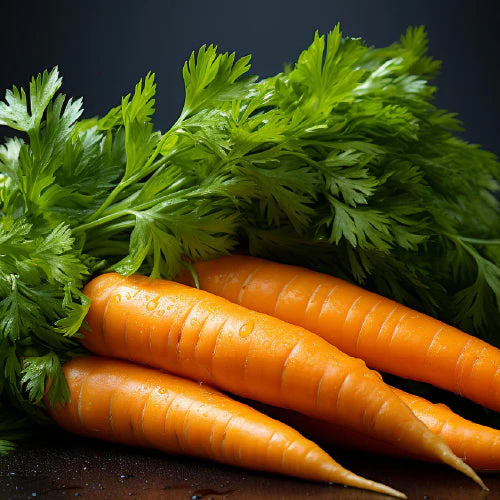Scientific Name: Daucus carota
Common Names:
– Orange Carrot
– Common Carrot
– Wild Carrot
Origin:
Native to Europe and Asia.
Physical Characteristics:
– Long, thin, and tapering root
– Bright orange in color with a smooth, glossy exterior
– Can grow up to 20 cm (8 inches) in length and 2.5 cm (1 inch) in diameter
Culinary Uses:
– Used raw, cooked, or pickled
– Adds sweetness, crunch, and flavor to various dishes
– Popular ingredient in many cuisines, including European, Asian, and Middle Eastern
Health Benefits:
– Rich in vitamins A and K, and minerals like potassium and fiber
– Has antioxidant, anti-inflammatory, and anti-cancer properties
– May help boost immunity, reduce risk of chronic diseases, and support healthy vision
Types of Orange Carrots:
– Nantes Carrot
– Imperator Carrot
– Danver Carrot
– Little Finger Carrot
Interesting Facts:
– Orange carrots were first cultivated in the Netherlands in the 17th century.
– Carrots were originally purple, white, or yellow in color.
– Orange carrots are high in beta-carotene, a pigment that converts to vitamin A in the body.









